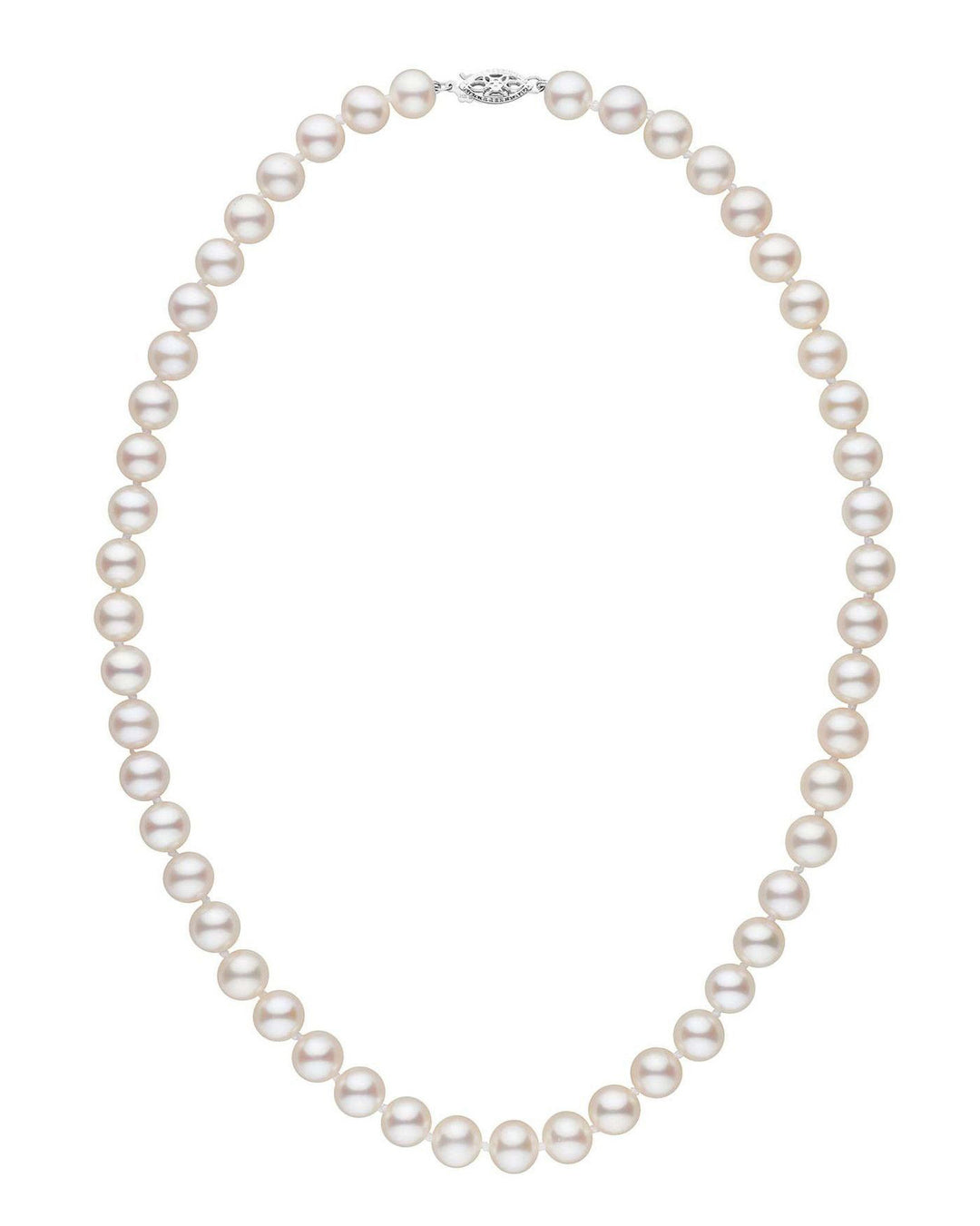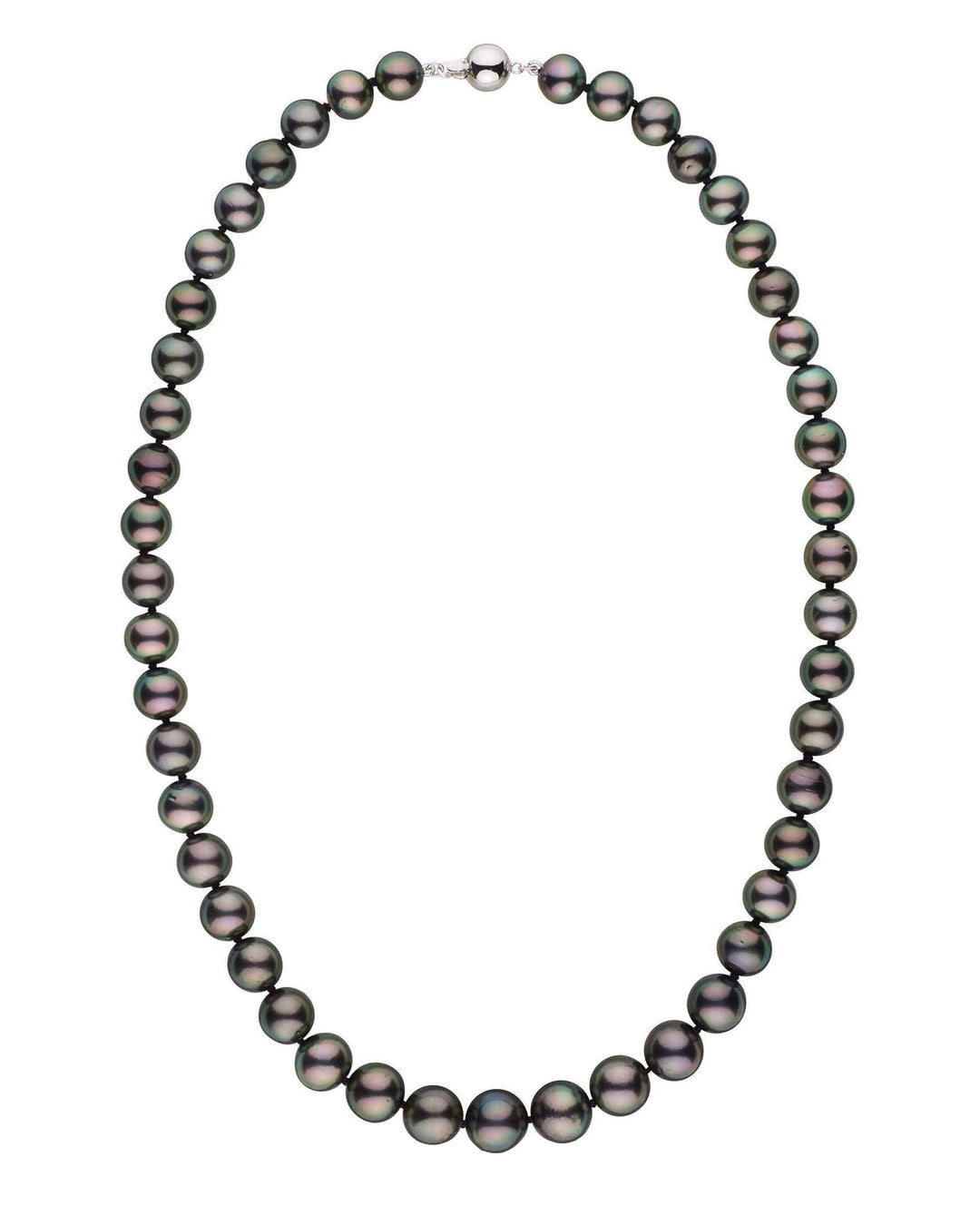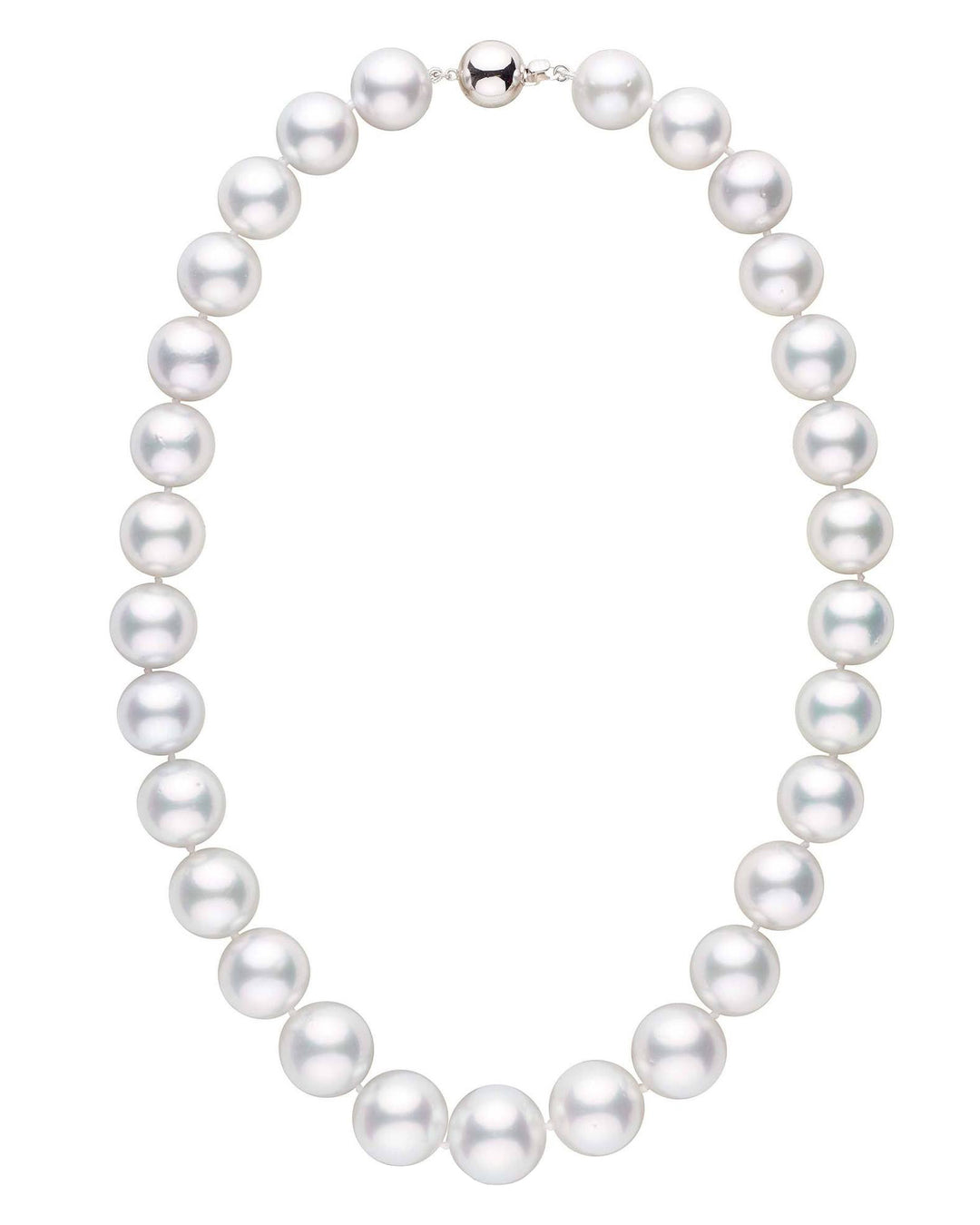
Pearls are personal and each is perfectly unique. The most important question we answer every day, is how do I select the perfect pearls?
If you’re new to pearls, the wide range of options may seem daunting at first. There are so many different types, sizes, colors, and grading systems. It's confusing to say the least.
Please give me a few minutes of your time. I promise it will be worth it.
~ Jeremy Shepherd - Founder & CEO of Pearl Paradise, Inc.
The Pearl Grading Myth
Let’s begin with pearl grading. If you’ve spent much time researching pearls, you’ve noticed there are many different pearl grading systems. Companies grade with letters, numbers, symbols while others define no grades at all. It doesn’t make sense, does it? Well, there is a reason.
Standardized pearl grading Is a myth. There is no defined, recognized system or standard for grading pearls. No two pearl companies in the world grade their pearls in the same way or to the same standard. It's inherently impossible.
You’re probably familiar with the 4 C's of diamond grading: cut, color, clarity and carat weight. These standards are clearly defined and values are assigned.
In pearl grading, there are seven value factors: size, shape, color, luster, surface quality, nacre quality and matching.
But there’s a catch! Pearl value factors are graded subjectively with no defined standards.
What does this mean for people comparison shopping for pearls?
Pearls graded AAA by one dealer could just as easily be graded A by another - using the same A-AAA scale.
What one can use for comparison shopping is experience and service. You should be able to speak to an expert face-to-face, virtually or on the phone. You should be able to request extra photos before making a final decision.

Pearl Types Used In Strands
One of the biggest misconceptions many people have when they begin their search for the perfect pearl necklace is the belief they want natural pearls rather than cultured pearls. Trust me, though, you probably don’t want a strand of natural pearls. Pearl farming, or the practice of inducing pearl oysters to grow cultured pearls, replaced the natural pearl trade a full century ago. Natural pearls do still exist, but a fine strand may cost more than a million dollars. If a seller claims to carry inexpensive natural pearls, they are being misleading.
There are four main varieties of cultured pearls commonly available today: Akoya, freshwater, Tahitian and South Sea pearls. Each offers something different and each can be magnificently beautiful.
Akoya Pearl Necklaces
Grown in saltwater, Akoya pearls are known for their color, shape and most of all, luster. Luster is the quantity and quality of light that reflects from the surface of the pearl. This is the most important factor in choosing an Akoya pearl necklace. It’s what makes the pearls shine. It’s also a proof-positive indicator of whether the pearls spent enough time in their mother oyster. Do you remember the part about a seller’s reputation? Quality sellers have long-established relationships with reputable farmers and processors.
Akoya pearl oysters are seeded with a perfect round bead and put back into the water ideally for a period of 1.5-2 years. But too many farmers harvest after only a few months. The pearls might look similar in the beginning, but due to the thin nacre, they won’t last more than a few years. Yet these types of pearls are often sold as AAA.
The finest Akoya pearls are called “hanadama” by the trade. Wait! Does this mean you can comparison price shop hanadama grade pearls? Not so much, unfortunately. It is still subjective and even when graded by a laboratory, there is a wide range of quality. A fine hanadama strand can cost three times that of a low to mid-range hanadama, even though the certificates might be identical. It comes down to reputation once again.
I should mention this side note about Akoya pearls. Nearly all Akoya are perfectly round and white, but exotic natural-color blues, silver-blues, golds and irregular baroque shapes exist. These are considered rare and you will have a hard time finding them in a jewelry store.
The most popular size of Akoya pearl for a necklace is 7-7.5 mm, while 8-8.5 mm takes a close second. Unless you’re purchasing a strand for a young lady, I would caution against going much smaller.
Freshwater Pearl Necklaces
Freshwater pearls have been around nearly as long as Akoya, but have never been considered quite as valuable, even though they are more “pearl” than Akoya. How so? Freshwater pearls are traditionally grown without a bead. They are 100% nacre (pearl). So why are they considered less valuable? Because a freshwater shell can grow dozens of pearls at a time. Most Akoya oysters only grow one or two at a time.
If you’ve seen freshwater pearls in a store, you probably think all freshwater pearls are weird shapes and not very shiny. This is most often the case. They aren’t as round as Akoya because they don’t have a bead in the center. But fine freshwater pearls do exist, and the finest, like those we refer to as “freshadama,” are nearly indistinguishable from fine Akoya pearls in shape, color and luster.
If this is the first strand of pearls for you or someone you’re shopping for, consider freshwater. Not only do they offer the Akoya look at a lower price, they also commonly grow in natural pastel colors. You’re only going to find those colors (naturally) in freshwater pearls.
Fine quality freshwater pearls are almost always sorted in half-millimeter sizes, and this makes a big difference in value. If you were to compare a strand measuring a full 7.0-8.0 mm with a strand measuring 7.5-8 mm (our most popular), the latter would be noticeably larger, shinier and more round.
Tahitian Pearl Necklaces
Have you been to Tahiti in French Polynesia? If so, I am sure you will agree it is one of the most exotic vacation destinations. The pearls that grow there are no less exotic. They are often called “black pearls,” but in reality, Tahitian pearls exhibit a rainbow of colors. The most popular is dark green.
Tahitians are saltwater pearls grown in a large oyster called the black lip. The large shell has a dark, effervescent color on the inside rim of its shell. The pearls it produces range from 7 mm to 15 mm, and typically exhibit the same, dark exotic colors found on the rim.
I have a particular affinity for Tahitian pearls. Over the years, I’ve spent time in some of the remotest parts of French Polynesia. On one trip, I brought a film crew to a pearl farm and shot a 20-minute documentary. That documentary won first place at the International Family Film Festival.
If you are considering a Tahitian pearl necklace, invest 20 minutes to watch this. Afterwards, you will know more about Tahitian pearls than 99% of GIA graduate jewelers.
The Tahitian Pearl
South Sea Pearl Necklaces
If you’re looking for a South Sea pearl necklace, chances are you’ve already done a bit of pearl research and you’ve likely purchased pearls in the past. South Sea pearls are not what I would typically recommend for a first strand of pearls - unless you’re the type who starts at the top.
South Sea pearls are the largest and most valuable of all saltwater pearls farmed today. They are produced in remote areas of Australia, the Philippines, Indonesia and a few other countries. The pearl oyster that grows these gems is the largest used in pearl farming. It’s the size of an American dinner plate, and the pearls are the size of marbles.
There are two types of South Sea pearls: those grown in the silver-lip and those grown in the gold-lip pearl oyster. You guessed it. White and silver South Sea pearls grow in the former and the ultra-valuable gold South Sea pearls in the latter. They make some of the most beautiful and most valuable South Sea pearl necklaces in the world.
These are statement pearls. If you’re the wearer, you’re making a statement. If you’re the giver, you’re making a statement. It’s impossible to wear a strand of South Sea pearls and not be noticed.
Pearl Knotting
Pearl necklaces should almost always be knotted between each pearl. The knots prevent the pearls from rubbing against one another and they also protect your investment. If your necklace were to break, your pearls wouldn’t scatter. The only exception to the knotting rule is with small, graduated strands. These do not look nice with knots so they are typically only knotted near the clasp.
Silk is the most popular thread, although many are beginning to use synthetic fibers because they tend to be more durable. Either is fine.

Choosing the Right Pearl Size
If you’re new to pearls, I know this is a question you will or already have been pondering. What size of pearl suits me/her. How would a strand of 6 mm Akoya look compared with an 8 mm strand of freshadama? How would either compare to a 10 mm strand of Tahitian?
After more than a quarter century in the pearl business, I can confidently state the most popular sizes. These sizes are safe, they aren’t too big and they aren’t too small. If you’re looking for something on the smaller side, go smaller. If you’re looking for something on the larger side, go larger.
The most popular size of Akoya pearl is 7-7.5 mm.
Freshwater pearl necklaces measuring 7.5-8 mm reign supreme.
Tahitian pearl necklaces are inherently larger pearls. Strands are typically graduated with smaller pearls near the clasp and larger pearls near the center. We import thousands of Tahitian pearls every year and those ranging from 8 mm to 11 mm account for more than 90%. That says something.
South Sea pearls are the largest. If you’re in the market for a South Sea pearl necklace, you already want large pearls. The most popular and the most wearable size ranges from 10 mm to 14 mm.
If you’re considering a necklace that is smaller or larger than these, remember this little piece of trivia: One millimeter difference in size may seem insignificant, but because pearls are round, the mass increases substantially. As a general rule of thumb, an increase of two millimeters will nearly double the overall size of a pearl.

Choosing the Right Length
The length of a pearl necklace is a personal preference. What look are you going for? If you plan to wear your pearls more casually, you’re probably better suited to a shorter strand. Longer strands are considered more formal, although this is not a hard rule.
The most popular lengths are 16 inches and 18 inches. Strands as long as 35 inches and even 50 inches are also very popular because they can be worn long or doubled up.










